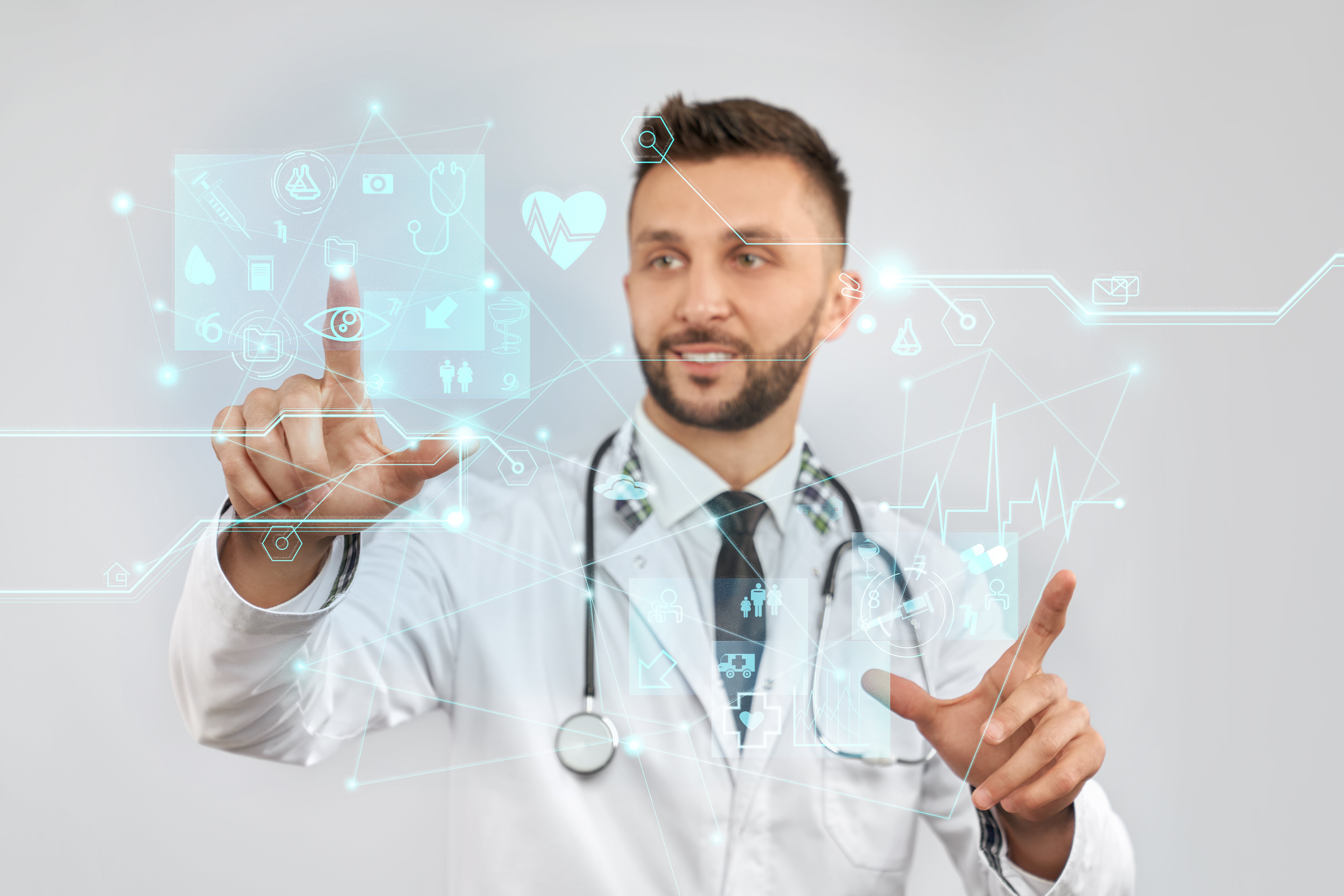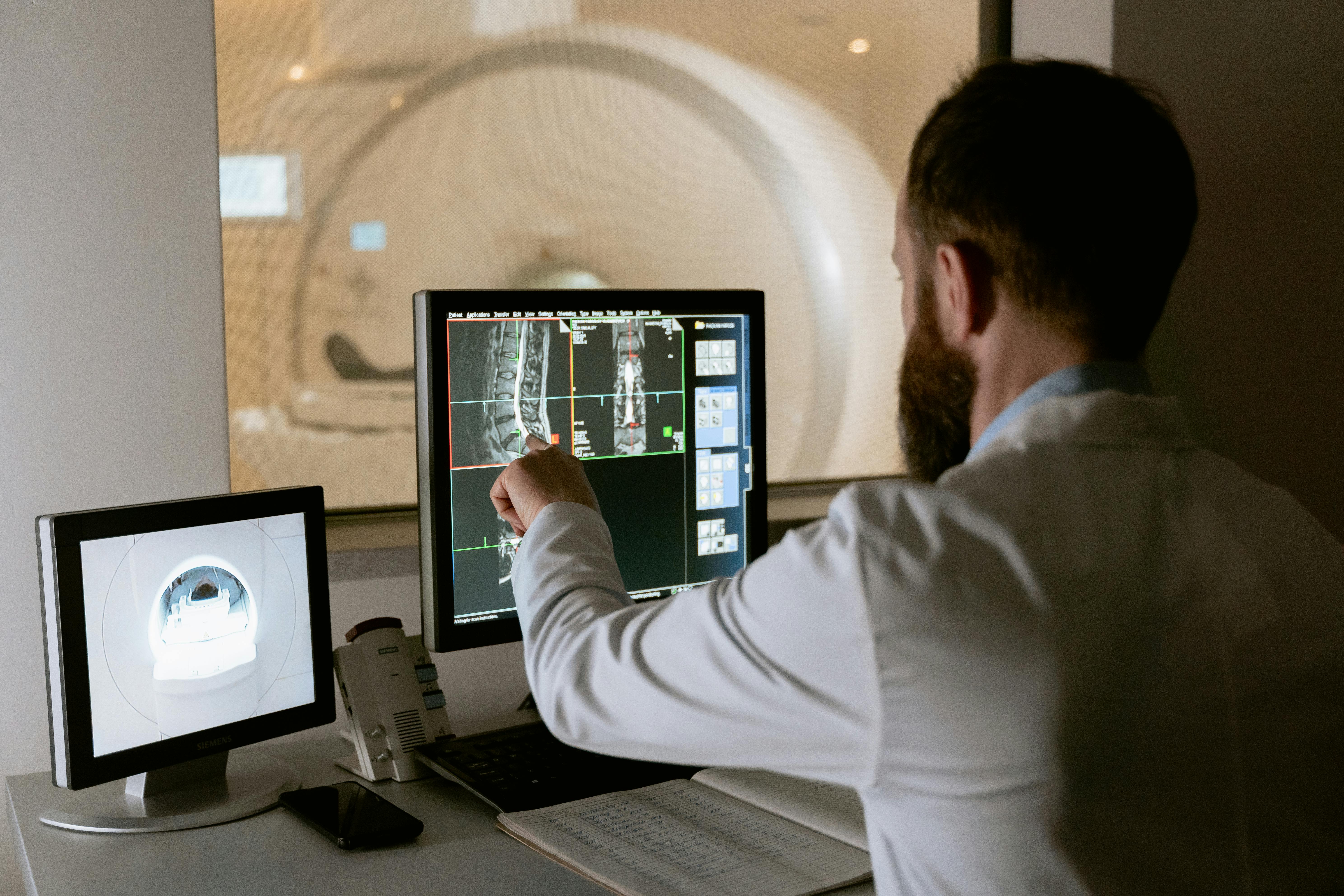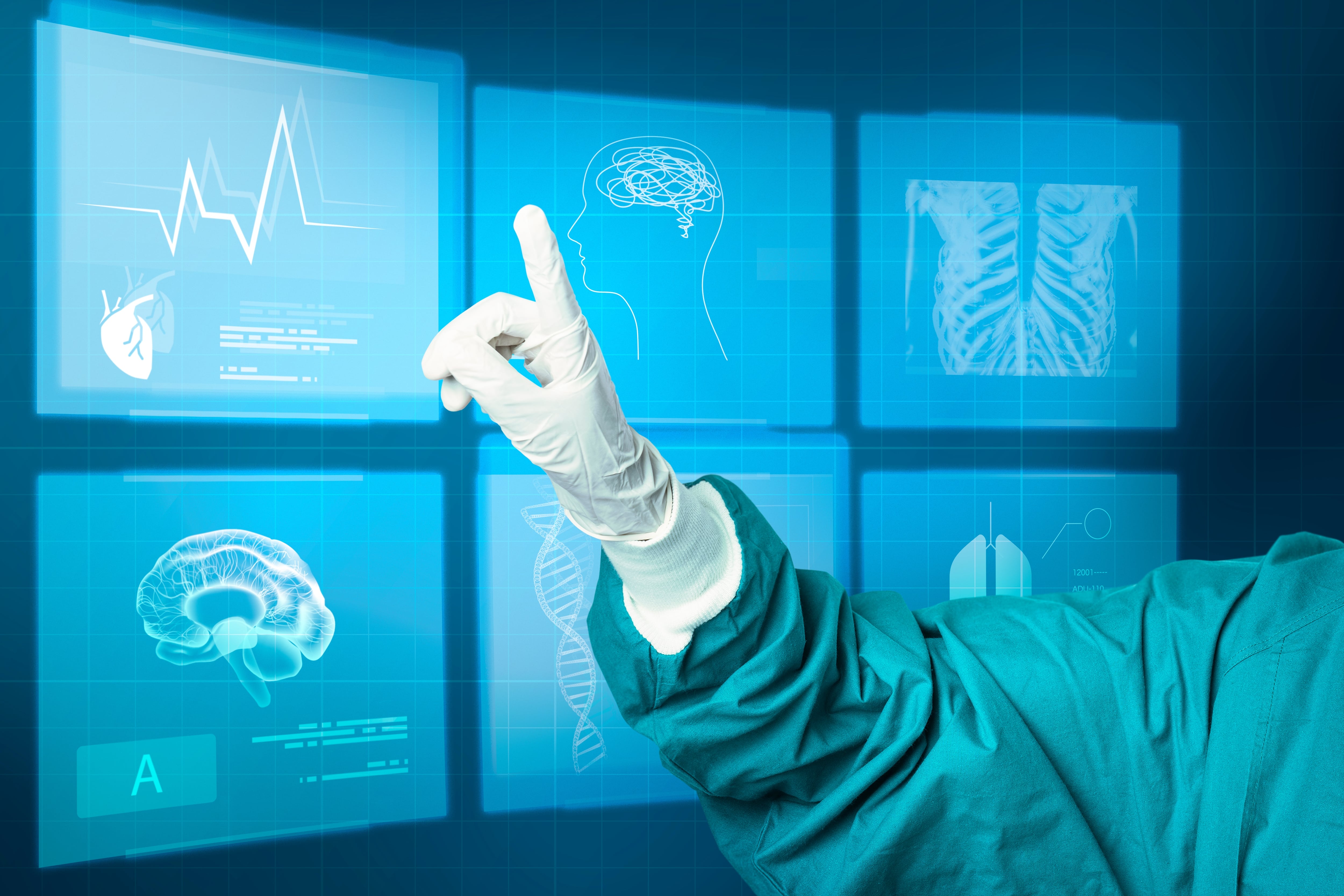Explore 20 ai healthcare companies leading patient access, imaging, and RCM in 2025—use cases, outcomes, and how to choose the right partner. Get insights.

Artificial intelligence is no longer a futuristic concept in medicine; it’s a powerful tool being used right now to reshape how healthcare is delivered. From the diagnostic lab to the hospital front desk, AI is helping clinicians make faster, more accurate decisions and administrative teams work more efficiently.
This guide explores the most impactful AI use cases for healthcare today. We will cover how these technologies are enhancing diagnostics, streamlining patient care, accelerating drug discovery, and improving public health surveillance. Understanding these applications is key for any healthcare leader looking to innovate and address today’s challenges.
Some of the most mature and impressive AI use cases for healthcare involve analyzing medical images and data to find diseases earlier and more accurately than ever before.
Medical scans like X rays, CTs, and MRIs contain an incredible amount of data. AI, particularly deep learning, excels at analyzing these images to spot subtle patterns that might indicate disease. Think of it as a tireless second pair of eyes for radiologists.
By late 2023, the FDA had cleared over 690 medical AI algorithms, and a staggering 76% of them were for radiology. These tools can flag potential strokes on a head CT, identify suspicious lung nodules, or detect breast cancer on mammograms, helping prioritize critical cases and reduce the risk of human error. A study on an AI used for stroke detection found it reduced time to treatment by 11 minutes and was associated with a 60% reduction in mortality.
In a busy emergency room, it can be easy to miss a subtle hairline fracture on an X ray. AI algorithms trained on thousands of images can instantly highlight potential breaks, ensuring patients get the right treatment quickly. Missed fractures are a common source of error in emergency departments, and AI provides a crucial safety net.
One AI system, Rayvolve, demonstrated a 98.5% sensitivity in detecting fractures. Its implementation in a real world setting was remarkable, cutting the average report turnaround time from 48 hours down to just 8.3 hours, an 83% improvement.
Diabetic retinopathy is a leading cause of vision loss, but up to 95% of it is preventable with early detection. Unfortunately, many patients with diabetes skip their recommended annual eye exams. AI is closing this gap.
The very first autonomous AI diagnostic device approved by the FDA was for this exact purpose. The system analyzes photos of the retina and can immediately determine if a patient needs to see an ophthalmologist. In its trial, the AI correctly identified referable diabetic retinopathy about 87% of the time, making screening more accessible in primary care clinics.
One of the most exciting frontiers for AI is predicting disease before symptoms even appear. By analyzing electronic health records (EHR), lab results, and even genetic data, AI models can identify patients at high risk for conditions like cancer or sepsis. If you’re evaluating connectivity with Epic, athena, or Cerner, see Prosper AI’s integrations.
Sepsis: A system developed at Johns Hopkins monitors patient data and can detect signs of sepsis nearly six hours earlier than traditional methods, a critical time savings that dramatically improves survival rates.
Pancreatic Cancer: Northwell Health’s “iNav” tool scans existing CT and MRI scans for unrelated issues to spot tiny, early stage pancreatic tumors. This proactive screening has cut the time from diagnosis to treatment in half.
These predictive AI use cases for healthcare are shifting medicine from a reactive to a proactive model.
Beyond diagnostics, AI is streamlining workflows, improving emergency response, and changing how patient care is managed day to day.
In an emergency, every second matters. AI is helping 911 dispatchers and paramedics make faster, better decisions. For example, an AI tool named Corti listens to emergency calls and can detect signs of a cardiac arrest with 95% accuracy, compared to 73% for human dispatchers. This prompts the dispatcher to provide CPR instructions sooner, which can double or even triple a person’s chance of survival.
AI can also help paramedics in the field by predicting which patients are most critical and suggesting the best hospital for their specific needs, ensuring a stroke patient goes directly to a specialized stroke center instead of a local hospital.
AI powered chatbots are now a common first point of contact for patients seeking medical advice. They ask about symptoms and medical history to guide patients toward the right level of care, whether it’s self care at home, a doctor’s appointment, or a trip to the emergency room.
While their accuracy is still improving, these bots help reduce the load on nurses and call centers by providing 24/7 assistance. More advanced systems are moving beyond text. For instance, conversational voice AI can answer patient calls, ask about their condition, and route them appropriately without any hold time, speeding up care for everyone. Health systems are deploying voice agents to reduce hold times and route calls instantly.
AI is extending care beyond the clinic walls. Using data from wearables, smart home devices, and other sensors, AI can monitor patients with chronic conditions in their own homes. These systems can track vital signs, sleep patterns, and activity levels, alerting care teams to potential problems before they become emergencies. This is a game changer for managing conditions like heart failure, diabetes, and COPD.
Ambient sensing takes this a step further. AI powered microphones and cameras can operate in the background of a clinical setting (or even a patient’s home) to understand conversations and context. A key application is automatically drafting clinical notes from a doctor patient conversation, freeing the physician from the keyboard.
Physicians often spend more time on paperwork and EHR data entry than on patient care, which is a major driver of burnout. AI is here to help. Ambient AI scribes can listen to a patient visit and automatically generate a detailed clinical note.
This technology also extends to medical coding. AI tools can read a doctor’s notes and suggest the correct billing codes for diagnoses and procedures. This reduces errors, prevents claim denials, and accelerates the revenue cycle for medical billing teams. By automating these tedious tasks, AI allows clinicians to focus on what they do best: caring for patients. Many administrative AI use cases for healthcare, like automating phone calls for scheduling or benefits verification, are delivering huge efficiency gains. This is especially impactful for specialty group practices managing high call volumes. If your organization struggles with phone based workflows, exploring a specialized platform like Prosper AI can help reduce staff burnout and improve patient access.
The journey of bringing a new drug to market is incredibly long and expensive. AI is streamlining this process from initial discovery to post market safety monitoring.
It can take over a decade and billions of dollars to develop a new drug. AI is drastically speeding this up by analyzing massive biological and chemical datasets to identify promising drug candidates. In one famous case, an AI discovered a novel antibiotic, Halicin, in a fraction of the time it would normally take.
AI also optimizes clinical trials. A major hurdle is finding enough eligible patients; in fact, about 80% of trials are delayed due to recruitment challenges. AI can scan health records to find ideal candidates in seconds. This not only accelerates research but gets life saving treatments to patients faster.
After a drug is on the market, pharmaceutical companies and regulators must monitor it for safety. They receive a massive volume of adverse event reports, and often, the same incident is reported by a patient, their doctor, and a hospital. Manually finding and merging these duplicate reports is a huge chore.
Using Natural Language Processing (NLP), AI systems can instantly compare new reports to existing ones and flag potential duplicates. This ensures safety data is clean and accurate, helping regulators spot real safety signals without the noise of redundant information.
AI provides public health officials with powerful tools to monitor community health, track outbreaks, and allocate resources where they are needed most. These large scale AI use cases for healthcare are essential for a proactive and resilient health system.
Modern public health dashboards are more than just charts of case counts. They are powered by AI that can forecast trends and calculate risk scores for specific events, like a potential disease outbreak. By analyzing data streams like ER visits, pharmacy sales, and even online search trends, these systems can provide early warnings.
A famous example is BlueDot, an AI platform that scanned news reports and airline data to issue one of the first alerts about the emerging COVID 19 outbreak in Wuhan, China.
Genomic surveillance involves sequencing the DNA or RNA of pathogens like viruses to track how they spread and evolve. This was a cornerstone of the global response to COVID 19, allowing scientists to quickly identify and track new variants like Alpha and Omicron. By understanding a variant’s genetic makeup, health officials can predict its transmissibility and its potential impact on vaccine effectiveness.
To improve the health of a whole community, you first have to understand its unique challenges. AI helps by analyzing vast datasets, including EHRs, claims data, and social determinants of health (like income, housing, and access to food).
An AI model might identify a neighborhood with high rates of ER visits for asthma and correlate it with local air pollution data, prompting officials to launch a targeted intervention. This data driven approach ensures resources are directed to the people and places that need them most.
Healthcare is one of the most heavily regulated industries. Hospitals and life science companies must comply with thousands of pages of complex rules. Manually reading and interpreting these documents is a monumental task.
NLP, a branch of AI focused on understanding language, can automate this. AI tools can scan regulatory documents, extract key requirements, and even check a company’s own paperwork for compliance. This technology saves countless hours and helps organizations avoid costly fines or delays.
These AI use cases for healthcare are not about replacing doctors or administrators. They are about augmenting human expertise with the power of data and computation. By handling repetitive tasks, analyzing complex information, and providing predictive insights, AI frees up healthcare professionals to focus on strategic decision making and compassionate patient care.
As these technologies continue to mature, they will become even more integrated into the fabric of our healthcare system, leading to better outcomes for patients and more sustainable operations for providers. To see how AI can start making an impact on your administrative workflows today, request a demo of Prosper AI’s voice agent platform.
The primary categories include diagnostics (like medical imaging), clinical operations (like documentation and triage), drug discovery and development, and public health (like outbreak surveillance and population health management).
AI algorithms, especially deep learning models, are trained on vast datasets of medical images (X rays, CT scans, MRIs) and other clinical data to recognize patterns associated with specific diseases. They can help detect conditions like cancer, fractures, and eye disease, often with accuracy comparable to or exceeding human experts.
Absolutely. This is one of the most immediate AI use cases for healthcare with a clear return on investment. AI can automate tasks like clinical documentation, medical coding, patient scheduling, and verifying insurance benefits. This reduces manual labor, minimizes errors, and frees up staff for more complex, patient facing work.
AI powered early warning systems in hospitals are a great example. By continuously monitoring a patient’s vital signs and lab results, these systems can predict the onset of life threatening conditions like sepsis hours before a human clinician might notice, allowing for earlier intervention and saving lives.
Yes, AI is crucial for modern public health. It powers surveillance dashboards that track and forecast disease outbreaks, helps officials understand a community’s specific health needs by analyzing social and economic data, and speeds up the analysis of pathogen genomes during a pandemic.
AI accelerates the long and expensive process of drug discovery in several ways. It can analyze huge databases of molecular compounds to predict which ones are most likely to be effective against a disease. It also helps optimize clinical trials by identifying and recruiting eligible patients much faster.
Discover how healthcare teams are transforming patient access with Prosper.

Explore 20 ai healthcare companies leading patient access, imaging, and RCM in 2025—use cases, outcomes, and how to choose the right partner. Get insights.

Explore 22 real-world examples of AI in hospitals—from chatbots and no-show prediction to imaging and billing—that boost efficiency and patient care outcomes.

Should AI be used in healthcare? Weigh benefits and risks, address bias, privacy and oversight, and learn practical steps for safe, ethical adoption. Read on.